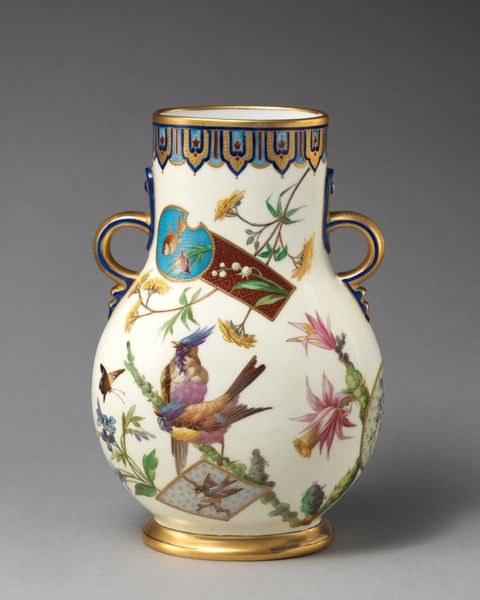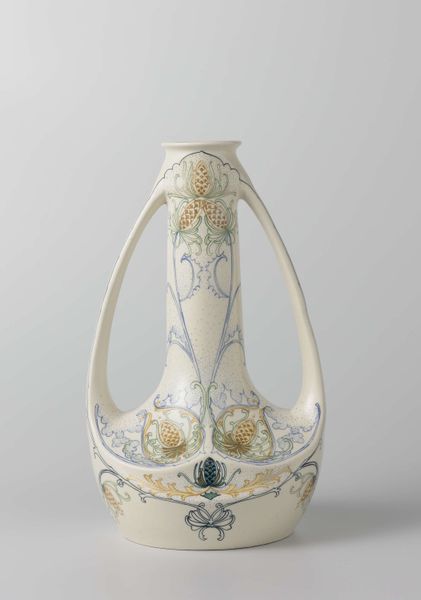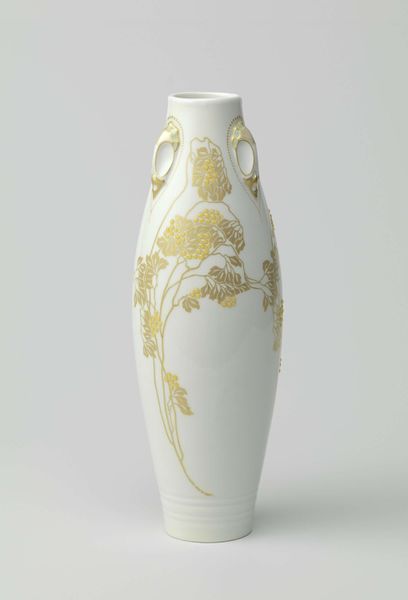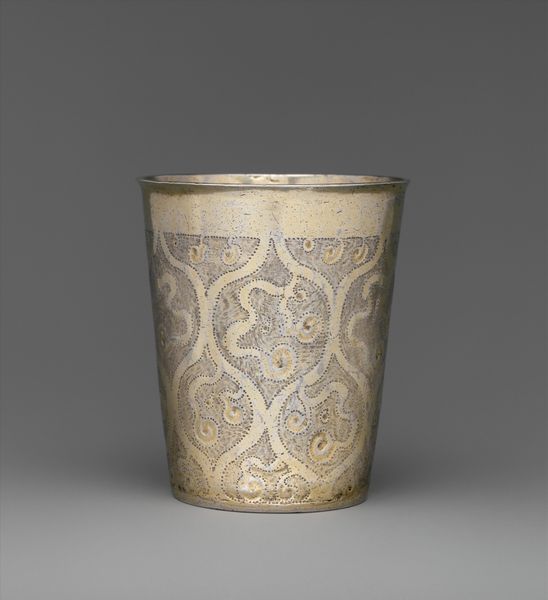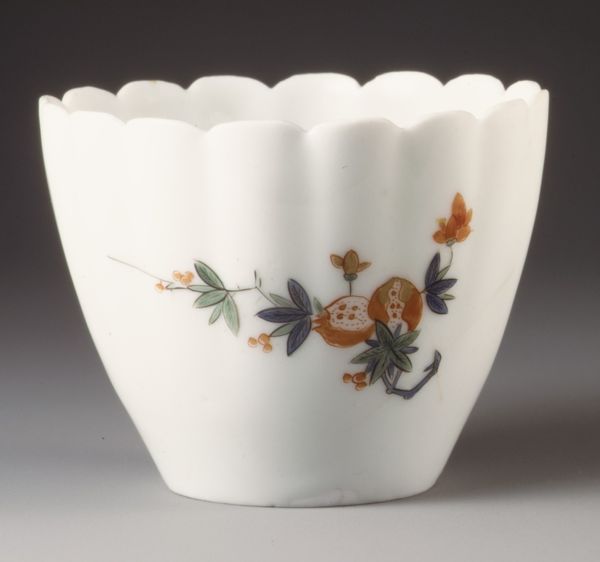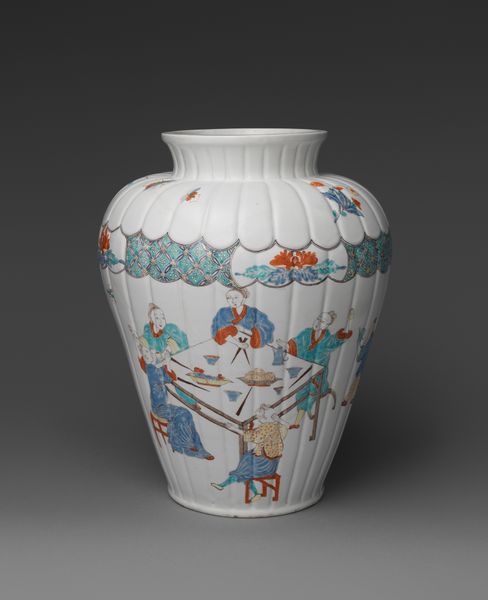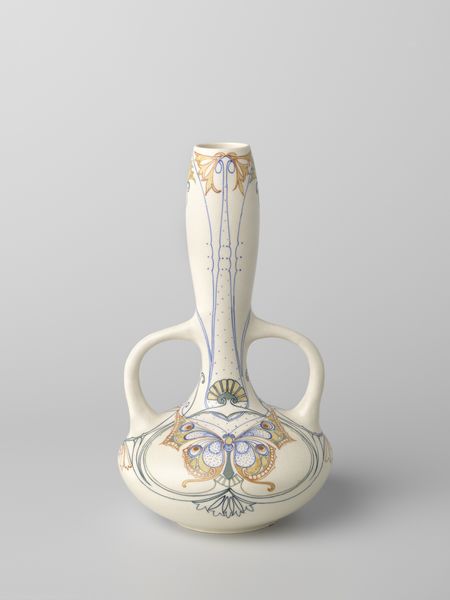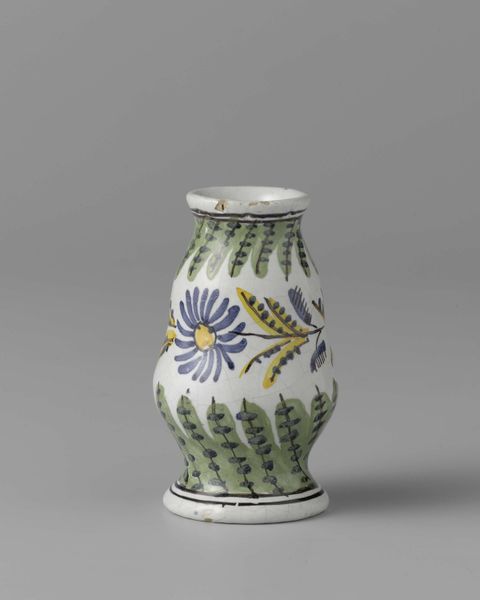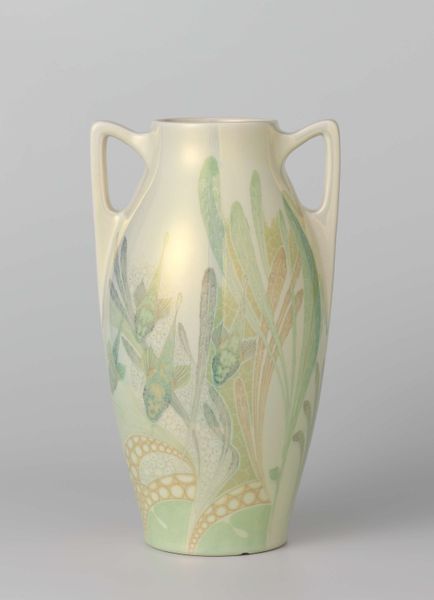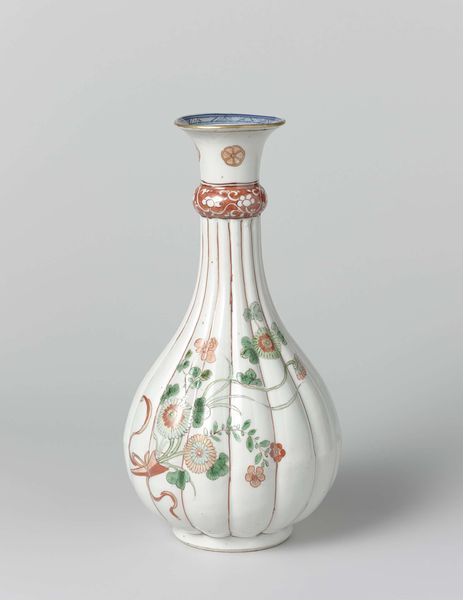
ceramic
#
art-nouveau
#
ceramic
#
ceramic
#
decorative-art
Dimensions: height 16.8 cm, diameter 11.2 cm
Copyright: Rijks Museum: Open Domain
Curator: Looking at this vase, I'm struck by the delicate, almost dreamlike quality it possesses. There's a muted elegance, don't you think? Editor: Yes, it's quite captivating. This is a ceramic vase produced by Plateelbakkerij Haga, dating from between 1904 and 1907, titled "Vaas met lelies," which translates to "Vase with Lilies". It exemplifies the Art Nouveau style that swept through Europe. Curator: Ah, Art Nouveau! That explains the stylized lilies. To me, lilies often symbolize purity and resurrection, a connection to spiritual rebirth. What’s fascinating is the stylization. How does Haga employ abstraction, I wonder, to communicate deeper meanings about gendered identity and social constructions present at the time? Editor: Absolutely. Art Nouveau often embraced symbolism heavily borrowed from natural forms and incorporated gender and class aspirations, where design becomes more than decorative. The lily motif, presented here in an almost drooping manner, appears in many artworks, as we know, even ancient ones. It represented queenship but also ruin in various epochs, its symbolic meanings were layered for each community that embraced the floral subject. Curator: A ruin is right! What stands out for me is the palette - creamy yellow. Does this perhaps convey something particular? Maybe the subverted symbolism speaks to a longing for beauty in a rapidly industrializing world and perhaps alludes to complicated feminine narratives within the era's social structure? Editor: Well, the gentle colour could signal serenity, an embrace of simpler values. These makers often referenced bygone Golden Ages of creativity through their ceramic designs. Perhaps the yellow alludes to these ideals, with abstracted visual elements and an updated color palette intended for modern tastes of the era, indicating continuity through cultural symbolism. Curator: I think that is valid. This vase certainly functions as more than just a vessel, serving as a silent observer of a period marked by seismic social shifts. It has far exceeded the traditional vessel form, indeed! Editor: I completely concur! This ceramic, in its form and motif, whispers echoes of queens, gods, memories, and dreams, interwoven in this lovely stylistic artifact of material culture.
Comments
No comments
Be the first to comment and join the conversation on the ultimate creative platform.

